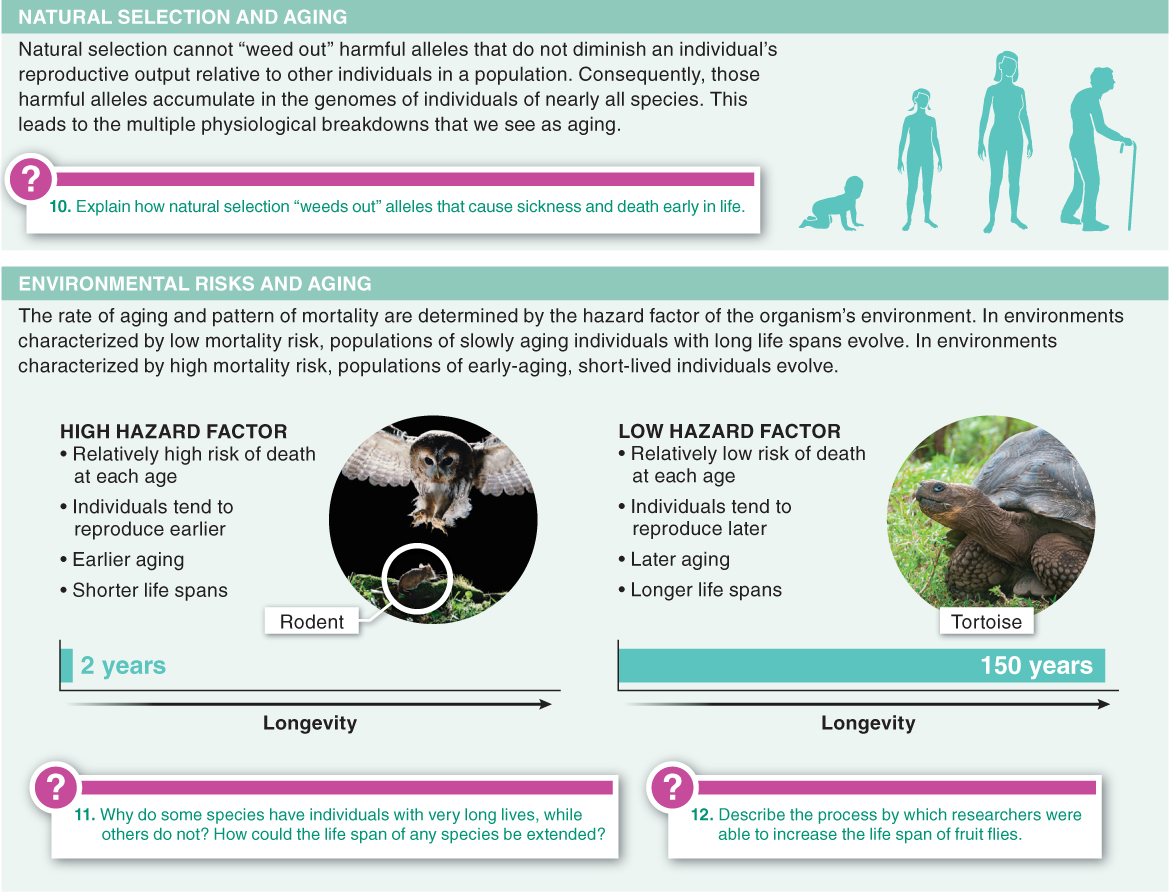14.11–14.13
14.11–Ecology influences the evolution of aging in a population.
From a population perspective, aging is an increased risk of dying with increasing age, after reaching the age of maturity.

Q
The death rate of organisms in a population exhibiting a type III survivorship curve is:
- a) unrelated to age.
- b) usually correlated with density-
independent causes. - c) higher in the post-
reproductive than in the pre- reproductive years. - d) lower after the organisms survive beyond the earliest age groups.
- e) more or less constant throughout their lives

Which of the following is a major trade-
- a) size of offspring for amount of parental investment
- b) size of offspring for number of reproductive events
- c) growth for reproduction
- d) size for life span
- e) number of reproductive events for number of offspring per reproductive event

Natural selection:
- a) does not influence aging, because aging is determined by an individual’s environment.
- b) cannot reduce the frequency of alleles that cause mortality among individuals who have not yet reached maturity.
- c) cannot weed out from a population any alleles that do not reduce an individual’s relative reproductive success, even if these alleles increase an individual’s risk of dying.
- d) can influence aging but not longevity.
- e) leads to an increase in the frequency of any illness-
inducing alleles that have their effect when an organism can reproduce.

Which of the following statements about the hazard factor of a population is incorrect?
- a) It is a measure of organisms’ risk of death from external sources.
- b) It is lower for a population of porcupines than for a population of guinea pigs.
- c) It is a measure of the ratio of mortality risk from external (environmental) causes relative to internal (genetic) causes.
- d) It is responsible for the rate of aging among individuals in the population.
- e) It is a measure of how quickly the individuals in a population age.
